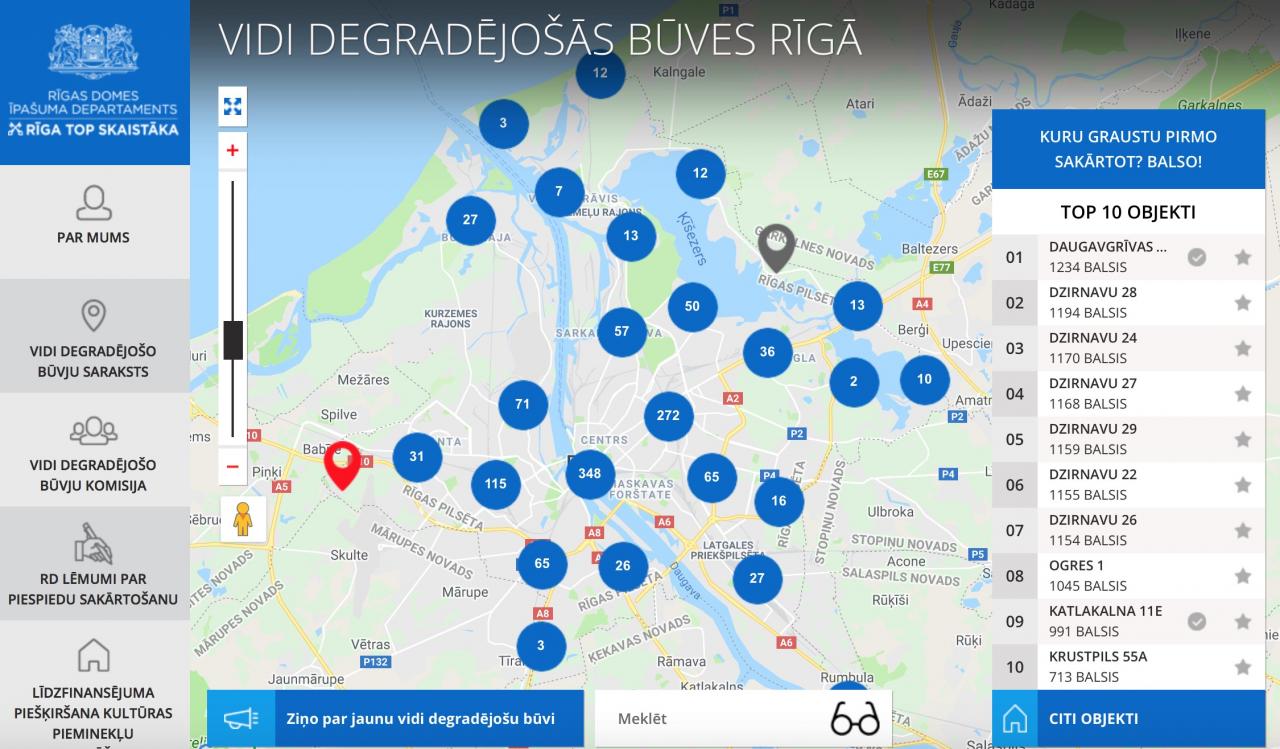
This was the key question the participants of the ALT/BAU meeting in Riga, June 2019 tried to answer. Together they exchanged and discussed their practices and solutions.
ALT/BAU Lead Expert Nils Scheffler and Martin Neubert, in charge of the ALT/BAU network, give you an overview.
Chemnitz presented their approach of defining ‘focus areas’, for which they do – through site visits, external data/document analysis and owners’ questionnaires – a comprehensive inventory of the vacant buildings. All the information about the vacant building is collected in a central database. Based on the database for each vacant building a ‘building profile sheet’ is developed, which is used in the acquisition of investors and potential buyers for the vacant buildings. .
Riga presented their website grausti.riga.lv, which allows citizens to map degraded buildings and vote, on which building the city should act on urgently.
Vilafranca presented their tool of data crossing of their municipal registry of inhabitants with data of the water supply company. The result is verified through site inspections.
The three presentations can be downloaded here.
Besides the presentations, the participants reflected the input in two parallel workshops. The first group collected and discussed methods to inventory and map vacant buildings and flats:
- Community Mapping
- Data analysis
- Site visits & vacant property counts
- Surveys & interviews
- Newspaper & internet analysis
- Obligatory notification of owners
The second group discussed which information is needed in support of the reactivation of vacant buildings and from which sources they can be retrieved.
The results of the workshops can be download here.
Connecting and coordinating public and private stakeholders in support of the reactivation of vacant buildings and flats
Another topic the participants worked on was ‘Connecting and coordinating public and private stakeholders in support of the reactivation of the vacant buildings and flats’. At the beginning of the workshop the ‘Housing agency’ of Chemnitz presented with which stakeholders they coordinate, which issues, which information they exchange and the structures they have set up for it. The presentation can be downloaded here.
The presentation was followed by two parallel workshops, discussing relevant stakeholders to coordinate with in support of the reactivation of vacant buildings and the coordination needs and tools.
Four key stakeholder groups were identified:
- Local administration units and agencies
- NGOs
- Professional stakeholders (architects, real estate agencies, etc.)
- Owners
As relevant coordination topics between them were discussed:
- Ownership change
- Current situation and need for action with regards to focus buildings
- Information about vacant buildings
- Rehabilitation / building permits
- Constructions works of technical infrastructure and public space
- Housing market developments and resulting requirements for reactivation of vacant buildings
- Entry of relevant data / information into property database / geographical information system
- Problems and ideas of citizens with vacant buildings and flats
The results of the workshops can be download here.
The URBACT transfer network ALT/BAU unites seven European cities in their effort to support the reactivation and reuse of vacant residential buildings and flats in their cities; this by transferring and adapting the good-practice model of Chemnitz’s ‘Housing agency’. With this purpose, they meet at transnational meetings to learn and exchange about the transfer and adaptation of Chemnitz’s good-practice and other good-practices of the city partners. |
